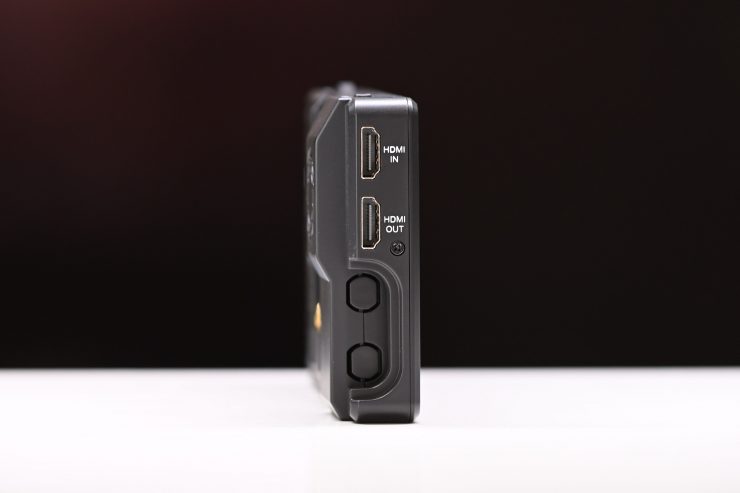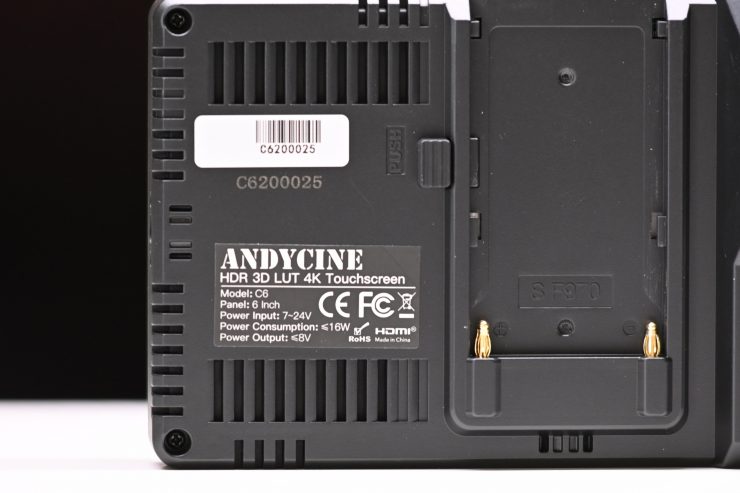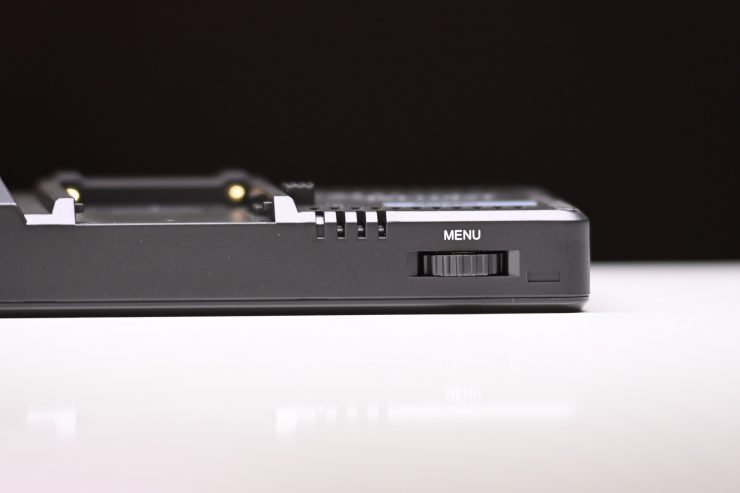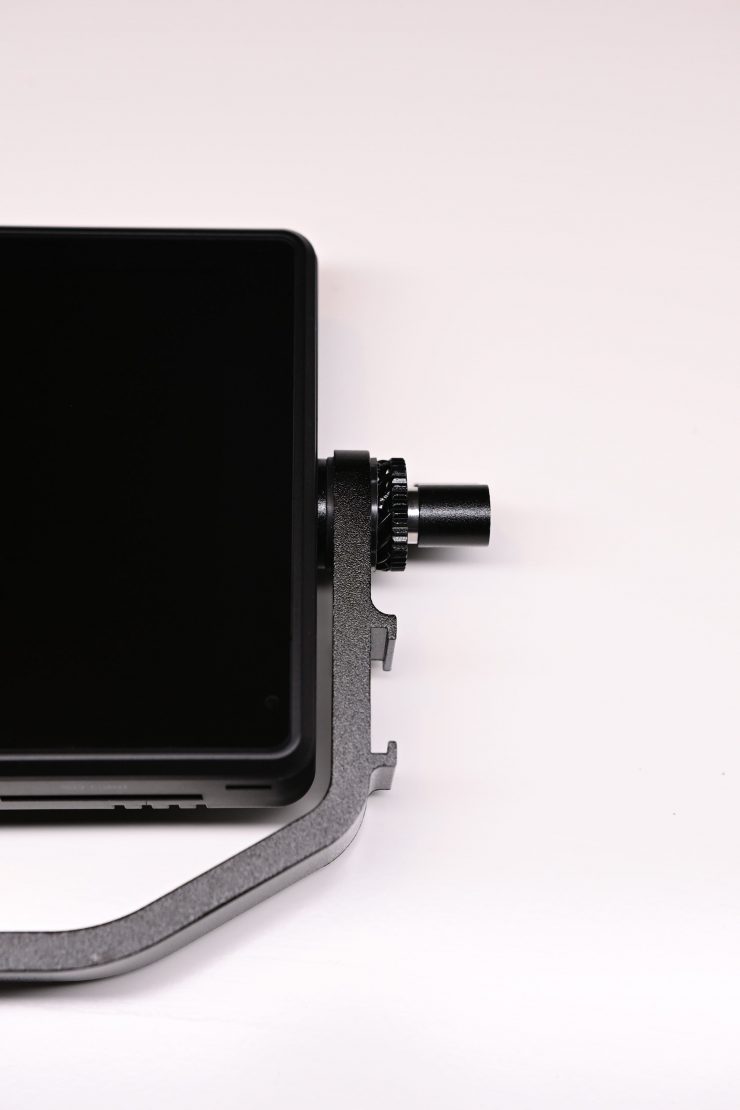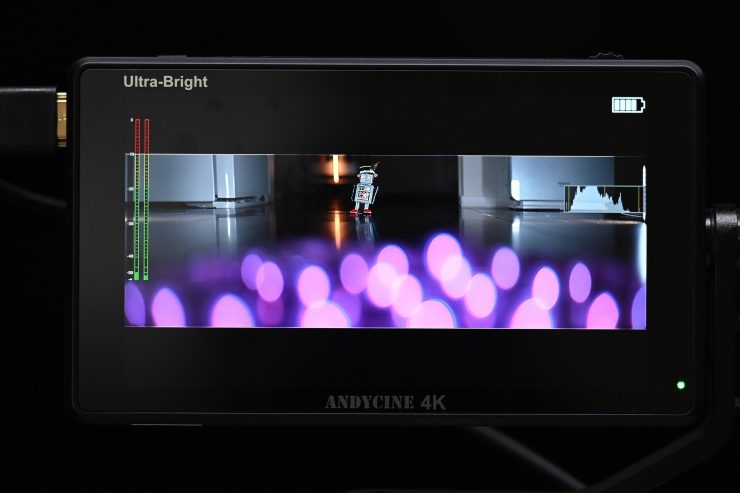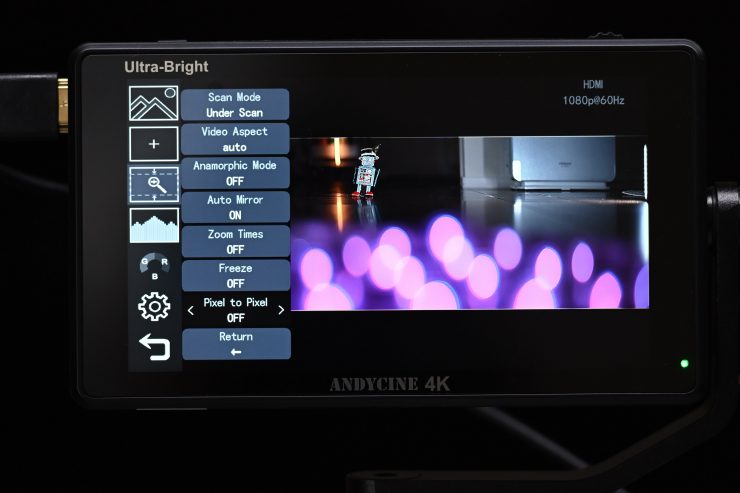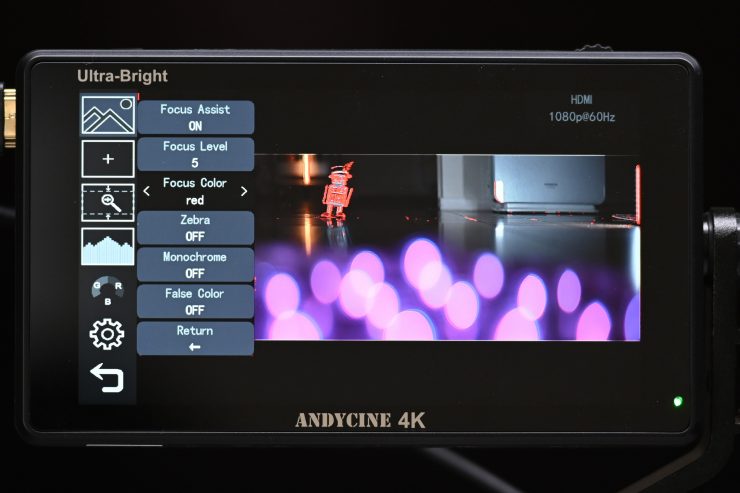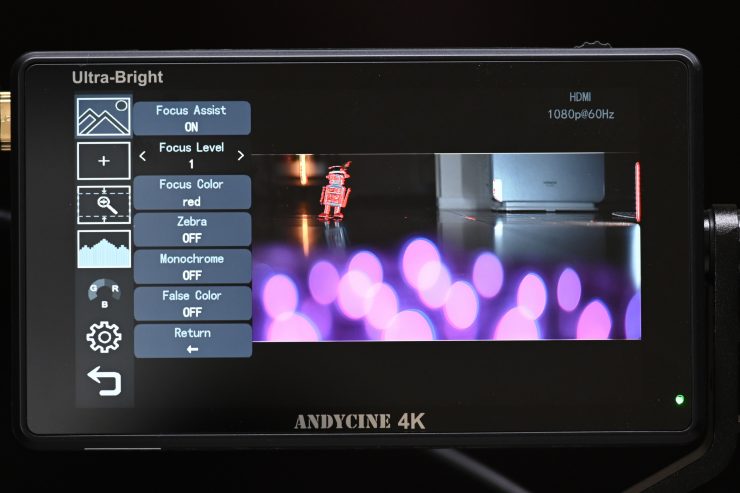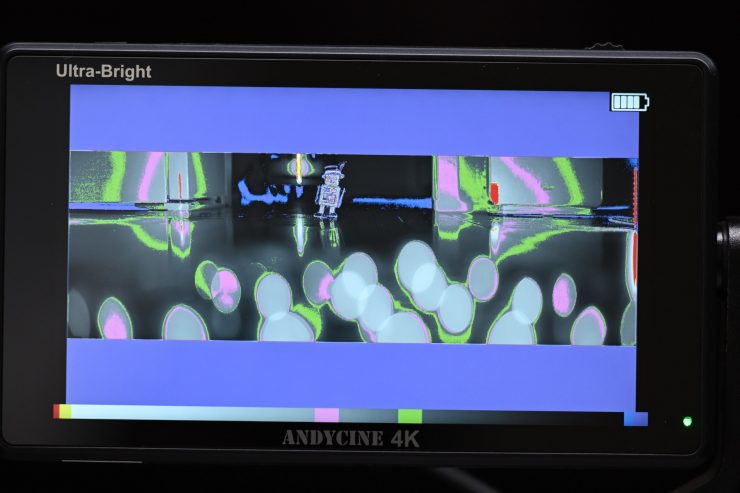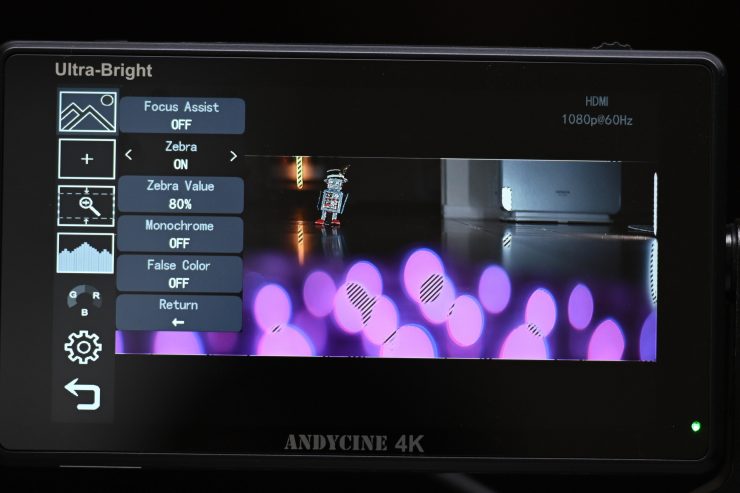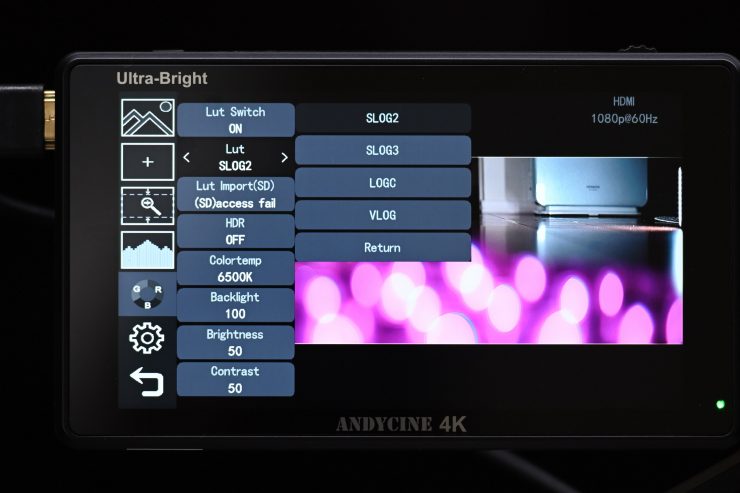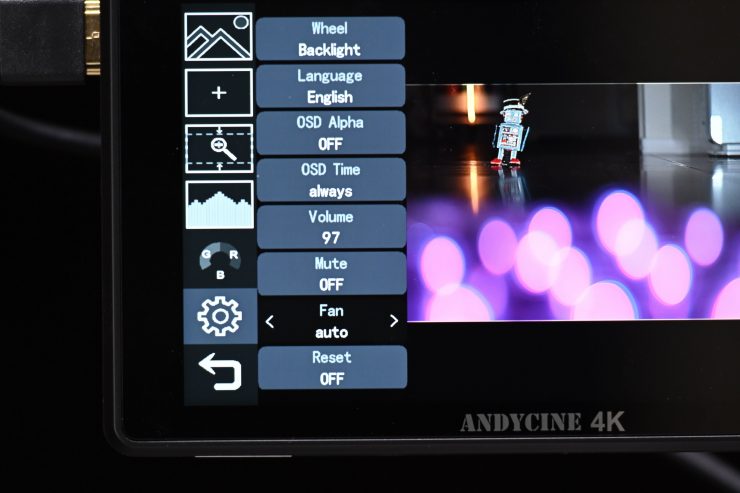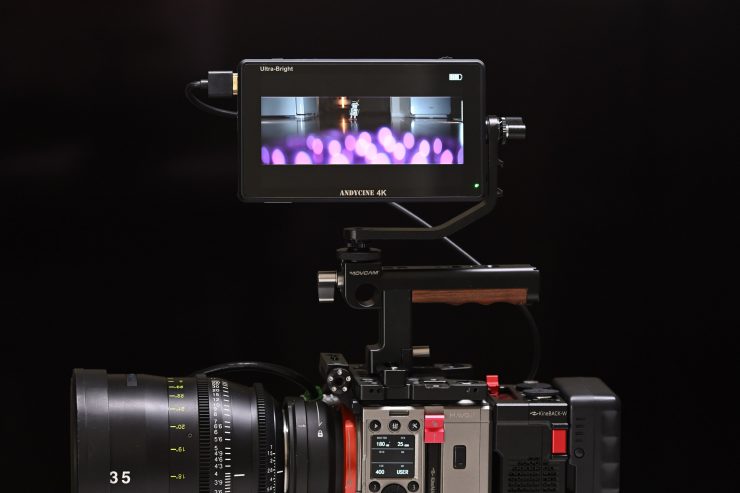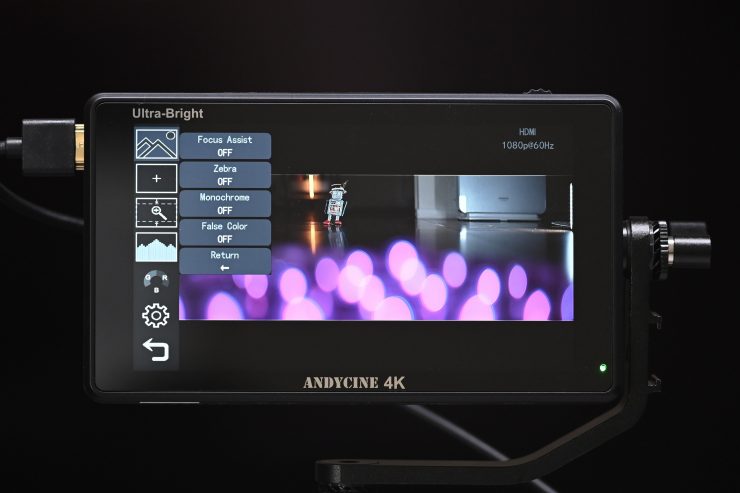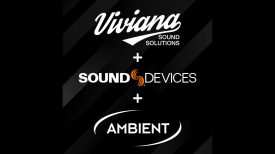
AndyCine recently announced the C6 6″ 2600nits Touchscreen Monitor. It is another budget-friendly, daylight viewable on-camera solution, along the same lines as the AndyCine C7 7″ Full HD HDMI Ultra-Bright Touchscreen Monitor that I recently reviewed.
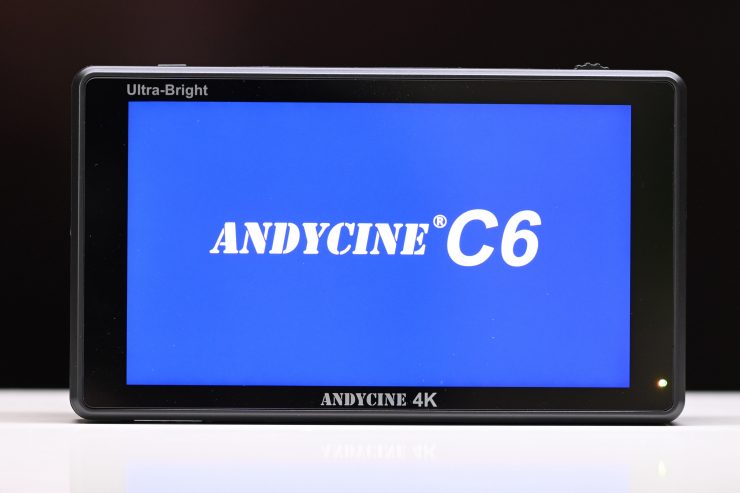
There is a plethora of budget 7″ and 5″ monitors on the market, but 6″ is a little less common. Choosing a monitor, especially a budget-priced one can be a daunting task. What a lot of people don’t know is that there is very little difference with the actual panel being used on most of these monitors, as there is only a handful of manufacturers in the world who make them. So when choosing a budget monitor you should look more closely at the operating system, build-quality, after-sales service, and general usability. Don’t get me wrong, image quality is also important, but with budget monitors, a lot of them are going to look fairly similar.
What really separates the budget monitors is the usability and operating system. A lot of them leave a lot to be desired. Touch screen displays are not expensive to produce, but we are still not seeing many budget monitors utilizing this technology. AndyCine is one of the few that do.
Key features
- 6″ touchscreen with tap and swipe controls
- Ultra-bright 2600 cd/m² screen
- Load 3D LUTs via an SD card
- Multiple imaging tools include waveform, vectorscope, histogram, and audio level displays
- Built-in light sensor that automatically dims the screen brightness according to the ambient light
- HDMI input and output with support for up to DCI 4K24 and UHD 4K30 video
What do you get?
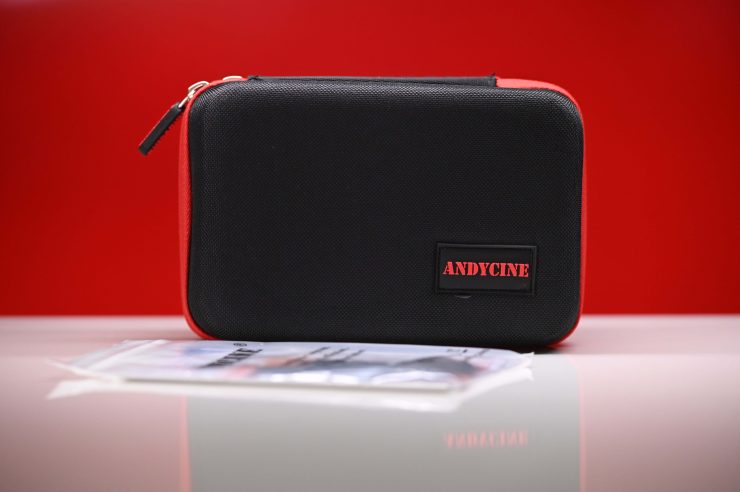
AnyCine gives you the following:
- C6 Monitor
- HDMI Type A to Mini-HDMI Cable
- HDMI Type A to Micro-HDMI Cable
- Tilt Arm
- Cleaning Cloth
- Operating Manual
Screen
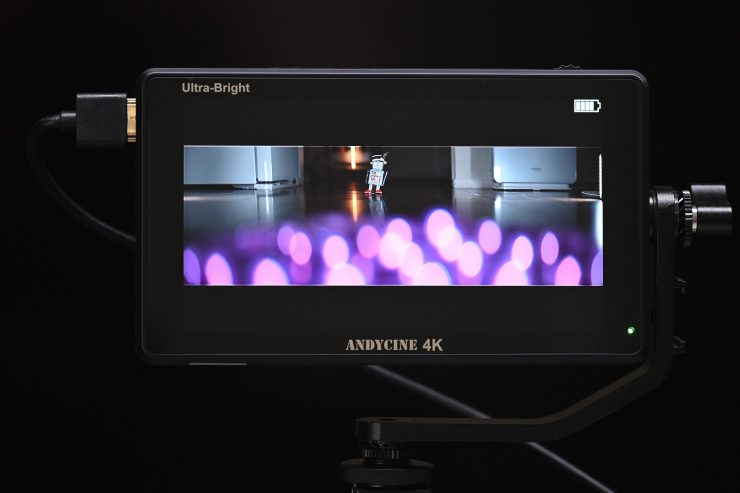
The screen is a 6″ 1920×1080 (8+2 FRC) IPS LCD panel. According to AndyCine it has 2600 cd/m2 of brightness, a contrast ratio of 1200:1, and a PPI of 440.
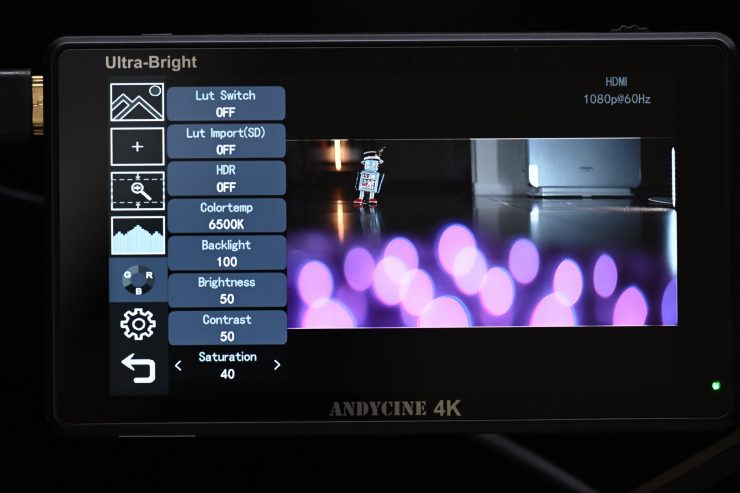
You can change the Kelvin color temperature of the screen as well as other parameters. More on the screen further down in the review.
Design
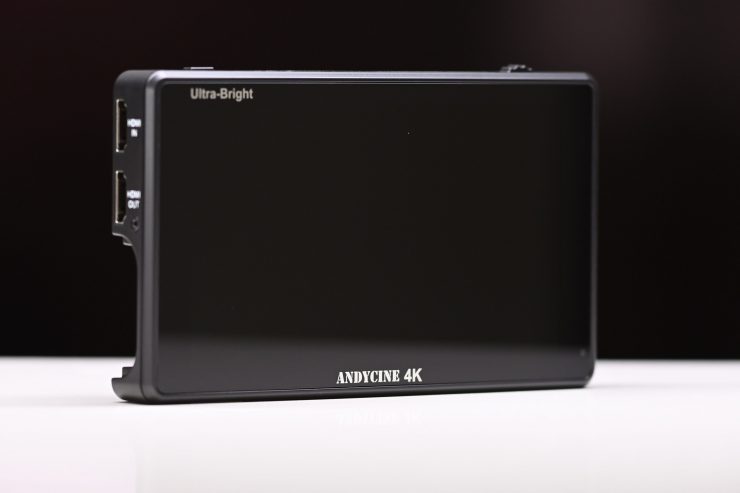
The monitor features a pretty basic design. The HDMI inputs and outputs are all on the left-hand side of the monitor.
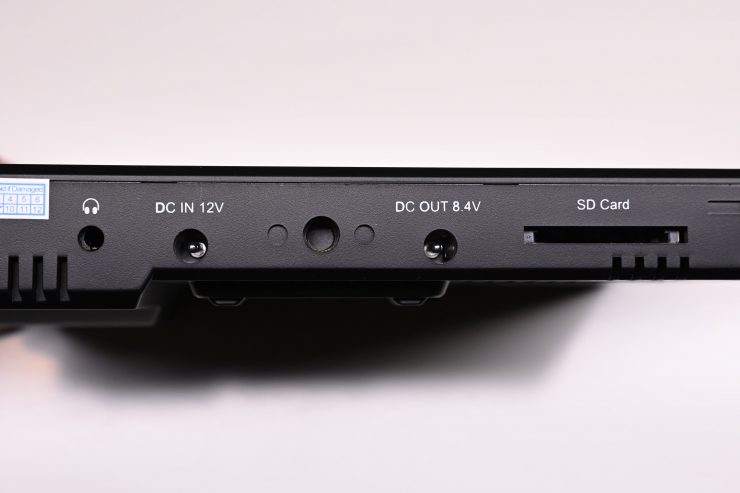
The SD card slot, 8.4V DC output, 12V DC input, and 3.5mm stereo headphone jack are all located on the bottom of the monitor.
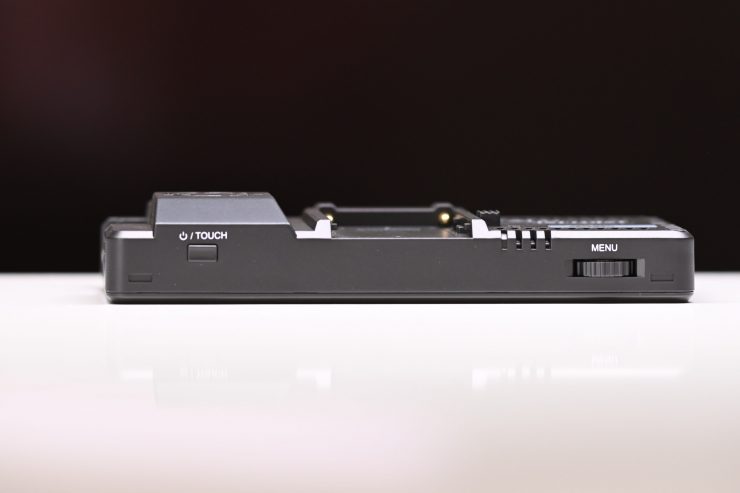
On the top, you will see a single button and a scroll wheel.
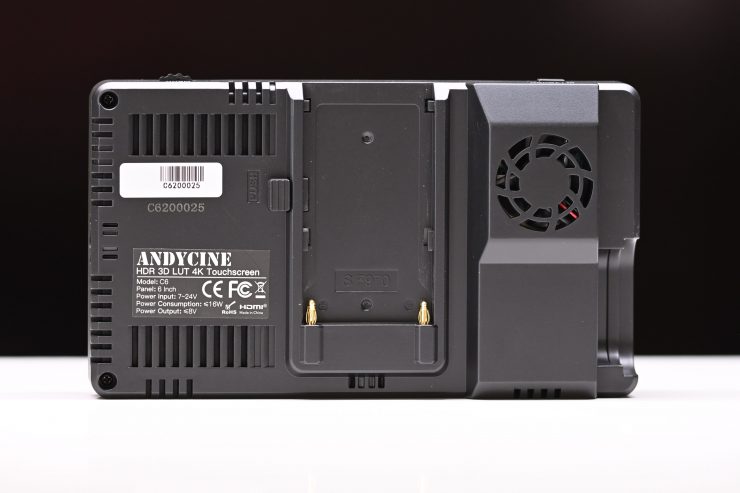
On the back, there is a single Sony NP battery plate.
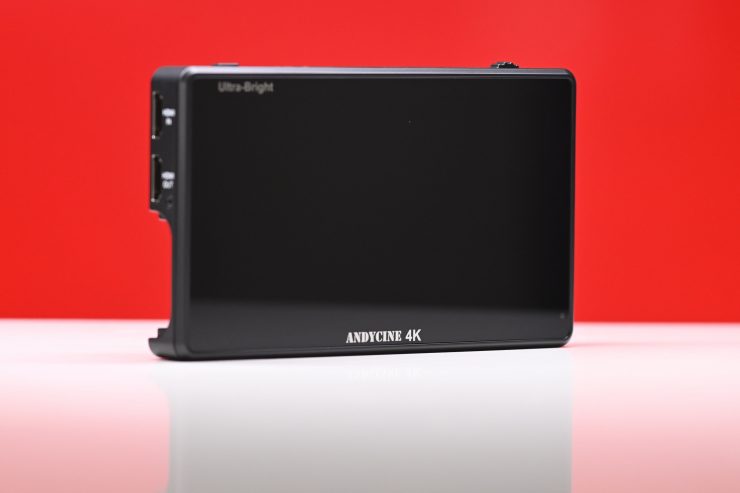
There is nothing overly unique or special about the design of the monitor. Personally, I don’t like the large ANYCINE 4K or Ultra-Bright labeling on the front of the monitor. I would have preferred to see a far cleaner design without all of the unnecessary labeling.
Build Quality
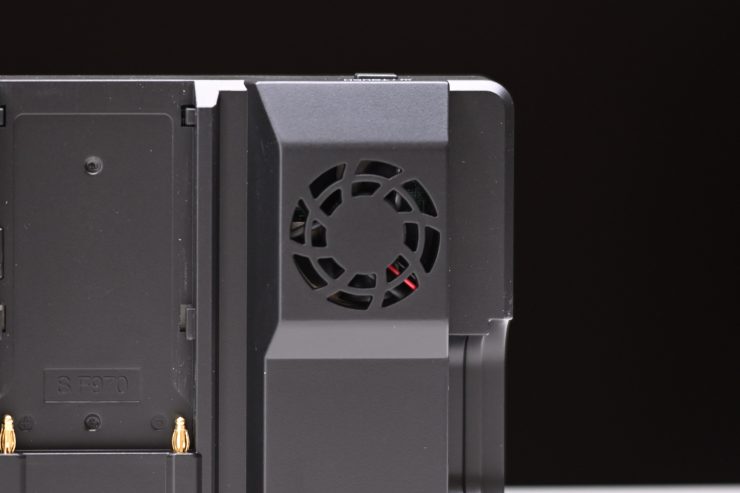
The build quality is fairly average and that is mainly due to the fact that the body of the monitor is made out of plastic. The buttons don’t inspire any confidence, and the HDMI ports are not countersunk which is dangerous as your HDMI cables will face straight out and will be subject to getting knocked or possibly broken. In saying that, most monitors, especially ones at this price, don’t have countersunk HDMI ports either.
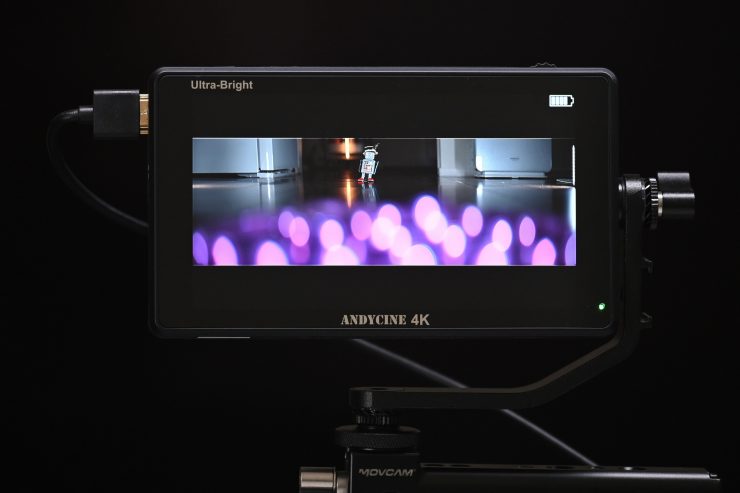
Having countersunk HDMI ports would have offered a little more protection. The buttons are also quite noisy when you press them. If you shake the monitor quite gently you can hear the top buttons and dials moving around.
The build quality isn’t the greatest, but that doesn’t necessarily mean that you will run into any issues. You just need to know what to expect if you buy one of these monitors. If you compare the build quality of this monitor to a SmallHD, or even some Atomos models, it isn’t nearly as good. However, as this monitor is far cheaper, I don’t expect the build quality to be as good. AndyCine has to save cost somewhere, and with a budget-priced monitor, it is arguably more important to have a better screen and OS system than better build quality.
Weight
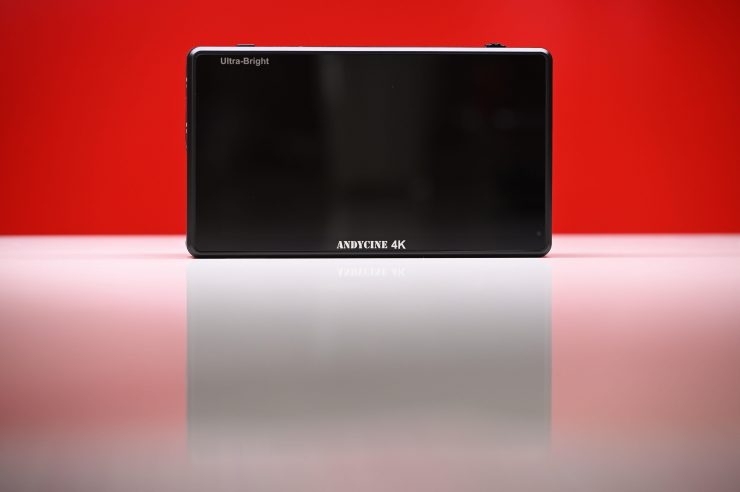
I weighed the AndyCine C6 monitor at 275 g (9.7 oz). As a comparison, the AndyCine C7 weighs in at 460 g / 1.01 lb.
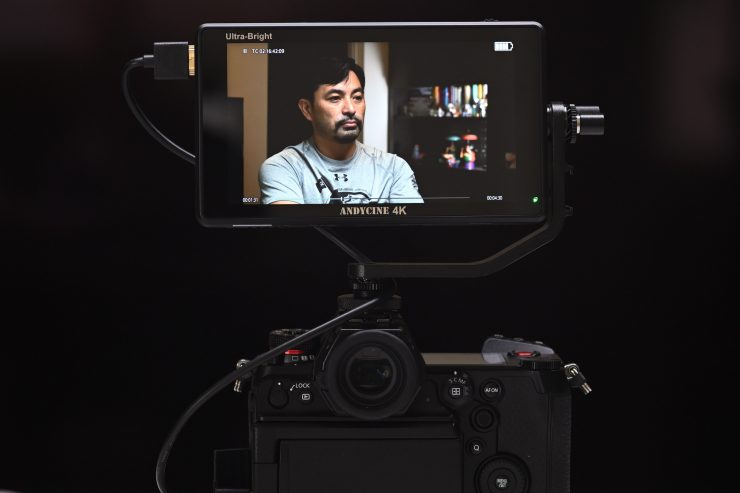
The monitor is pretty light, which makes it more suitable for use with a hybrid mirrorless or small digital cinema camera. I personally think 5″ is probably the ideal size for smaller sized cameras. 6″ does give you that little bit more screen real estate. In my opinion, a 7″ monitor is too big for a hybrid mirrorless or DSLR. A 7″ monitor is much better suited to a mid-sized or larger digital cinema camera.
5″ and 7″ monitors are much more prevalent than 6″.
Mounting Points
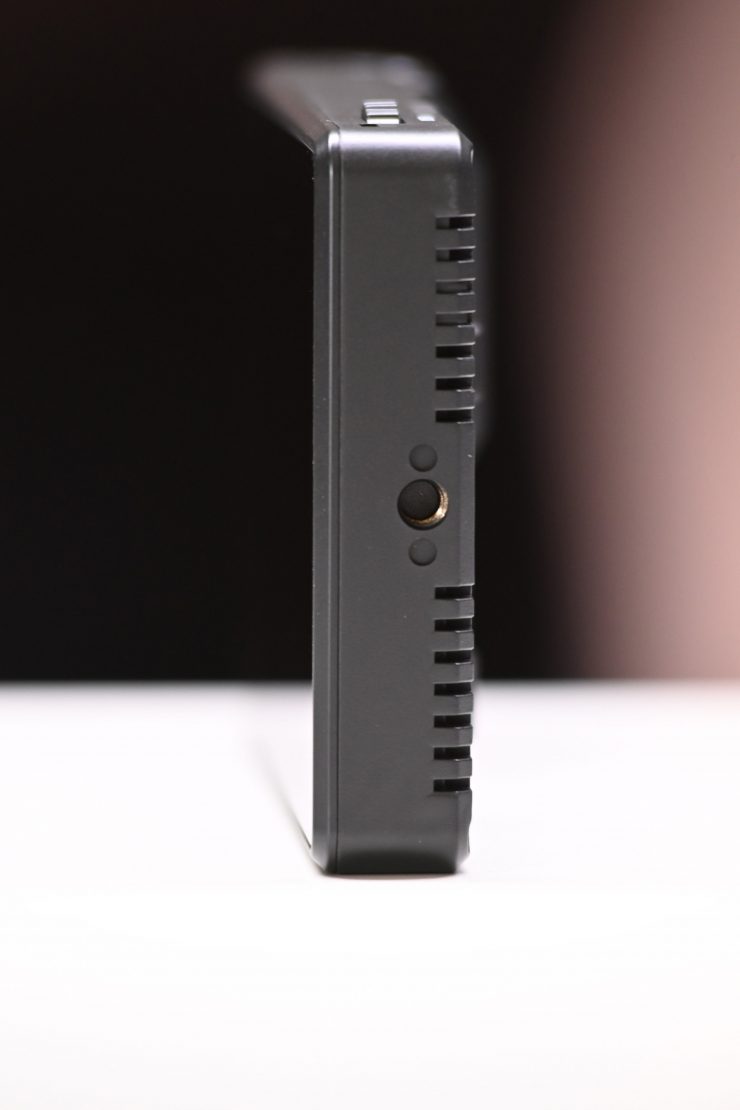
AndyCine has put 1/4 20″ mounting points on the bottom, and the right-hand side of the monitor. There aren’t any mounting points on the top or the left-hand side.
The mounting holes are made well and you can attach monitor arms or other mounting solutions without anything wobbling around or moving when it shouldn’t.
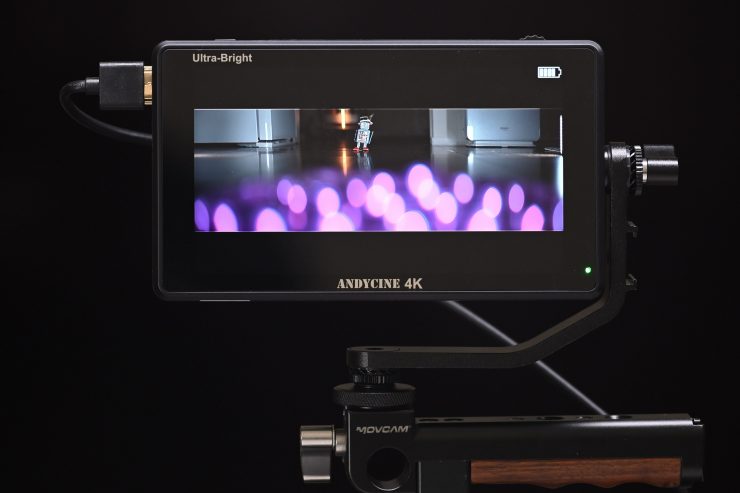
The included monitor bracket is reasonably good. It uses a type of ratchet mechanism so you do get some friction when making adjustments. It is a little fiddly to use and set up. If you don’t attach it properly you will find the monitor sits at an angle.
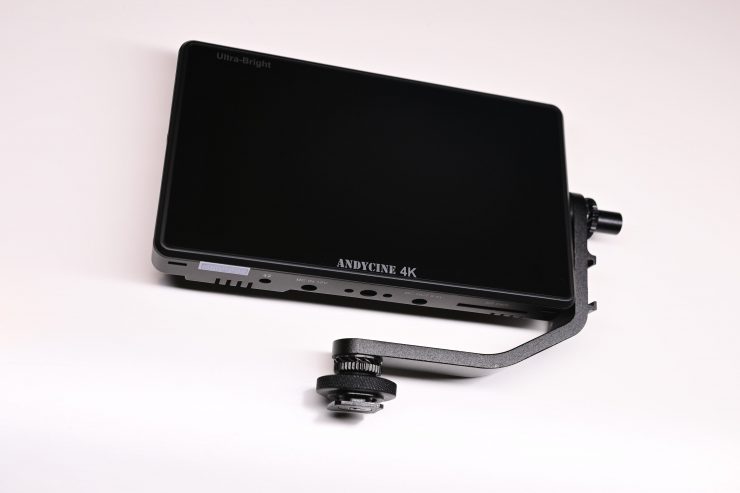
Again I am not going to complain too much, because the monitor bracket is included so you can choose to use it or not.
Boot Up Time
The monitor takes around 5 seconds to boot up and display an image once you press the on button. This is reasonably quick.
Inputs/Outputs
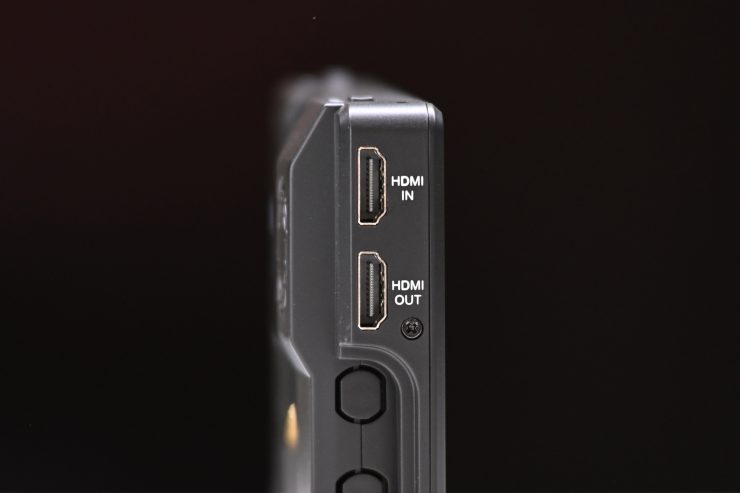
The monitor has an HDMI Type A Input and an HDMI Type A Output. You can loop signals through if need be.
As I mentioned earlier, the input and outputs are located on the left-hand side of the monitor, which is convenient when using most mirrorless hybrids. The HDMI In and Out are not countersunk so there is no protection.
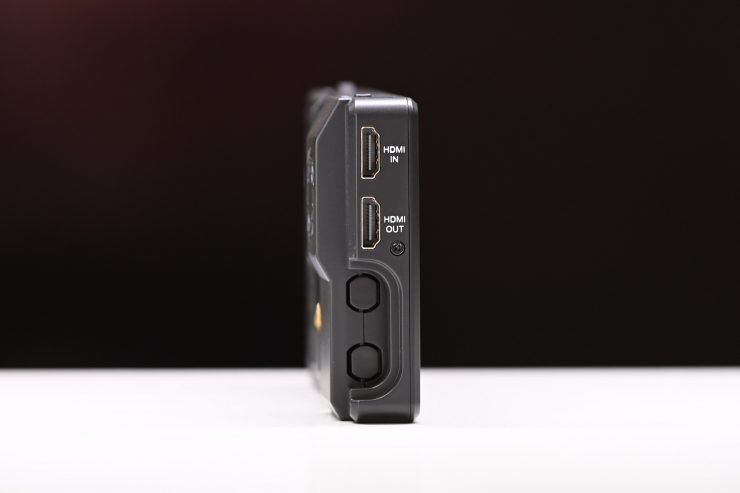
On the left-hand side of the monitor below the HDMI ports, you will also see two strange indents with holes that are covered up. This is where the SDI ports would go if you bought the C6S version of the monitor. AndyCine has obviously just made the same casing for both models and they just cut out the plastic covers that cover the holes out for the SDI/HDMI version.
As I previously mentioned, on the bottom of the monitor, you will find the 3.5mm stereo headphone jack and SD card slot.
Viewing Assist Tools
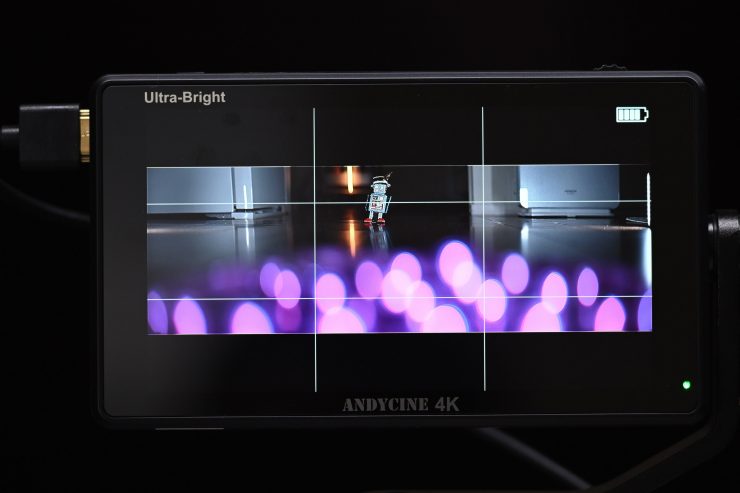
The monitor has quite an extensive array of monitoring assist tools:
- Waveform
- Vectorscope
- Histogram
- 3D Luts
- Peaking focus assist (red, green, or blue)
- False color
- Zebras
- Nine-grid
- Embedded audio
- Scan mode (underscan, overscan)
- Zoom (4x, 9x, 16x)
- Anamorphic mode (1.3x, 2x, 2x mag)
- Pixel-to-pixel
- Center marker
- Safe area (80, 85, 90, 93, 96%, 2.35:1)
- Ratio marker (4:3, 13:9, 14:9, 15:9, 16:9, 1.85:1, 2.35:1)
- Marker color (red, green, blue, white, black)
- Check field (red, green, blue, mono)
- Image flip (H, V, H/V)Image freeze
The majority of these tools can be adjusted and customized. It is nice to see items such as waveform, vectorscope, and false color on this monitor.
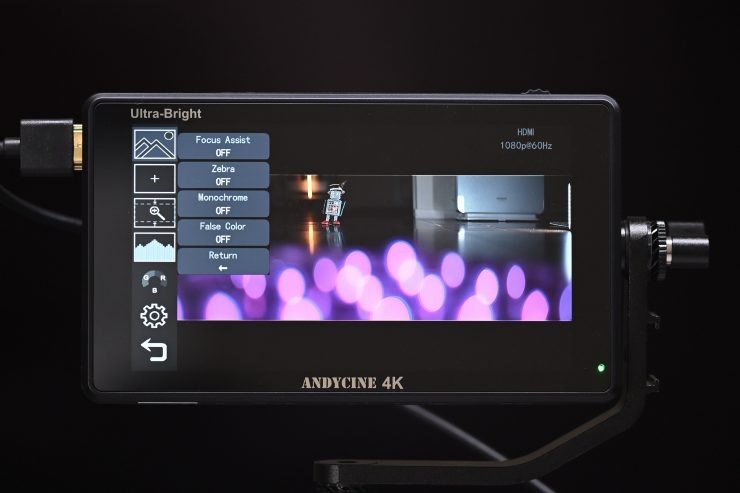
With focus peaking, you can adjust the color as well as the intensity.
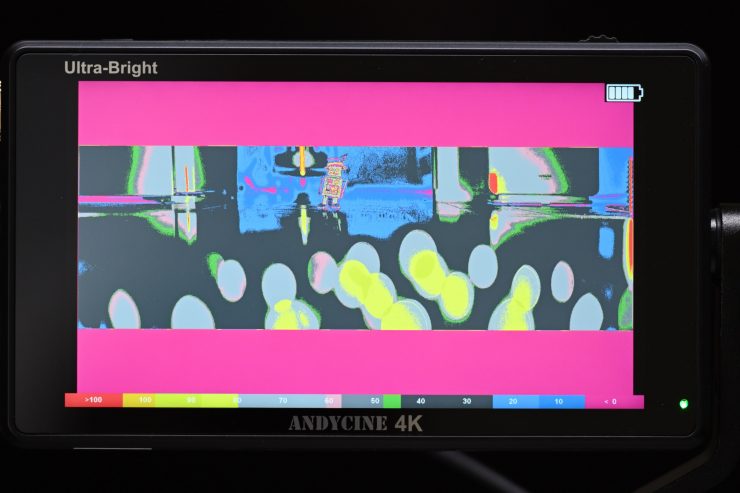
I like having False Color, however, there are two different versions of False Color and they include reference scales. The only trouble with the false color indicators is you have no idea what camera it is based on. Every camera’s false color scale is different and not knowing which particular camera this is based on makes it more of a ballpark guide rather than anything definitive.
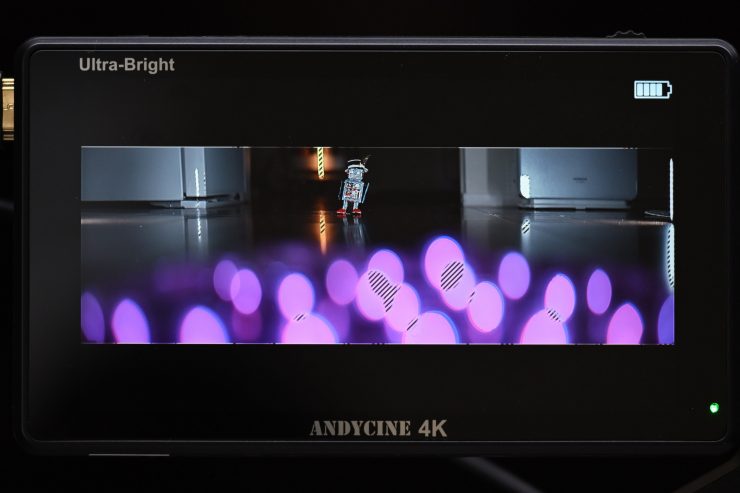
With zebras, you can adjust them from 0-100%. This is nice because you can set the exact level for middle grey on your camera and use that to get accurate expose.
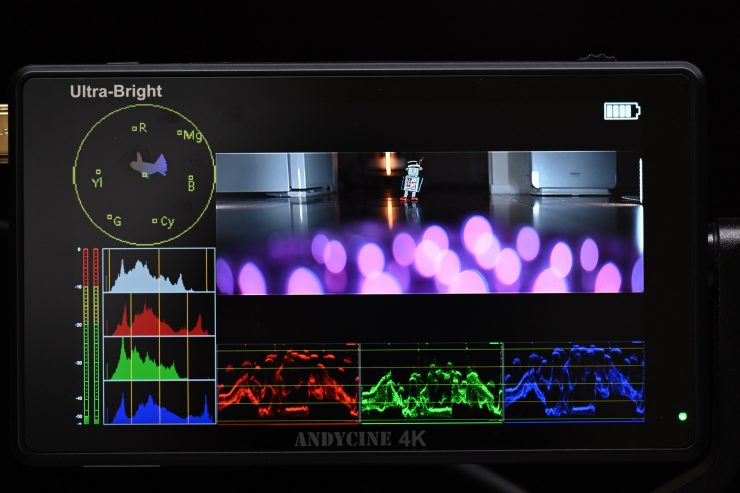
It is also nice that you can bring up one page that shows a range of scopes.
There is also a function called Freeze. Basically, if you set up a shot and then you go into the menu and turn Freeze on it will keep displaying that exact shot until you turn it off.
Another nice feature is that you can have as many monitoring tools selected at once as you like.
Operating System
The operating system of the monitor uses a combination of buttons, a scroll wheel, and touch screen functionality. This allows you to use the monitor completely via touchscreen operation, or through the use of buttons. It is nice to have both options because if you are using the monitor in cold conditions you may have gloves on and the touchscreen is then not always the easiest to use.
You shouldn’t confuse the touchscreen functionality with the same sort of way it works on a SmallHD or an Atomos. On the AndyCine C6, the touchscreen operation isn’t implemented nearly as well. In saying that, it is still pretty good for a budget monitor.
The monitor does have pinch to zoom. The pinch to zoom does work and you can drag the position around on the screen. Like any touch screen device, sometimes you have to do it more than once to get it to work.
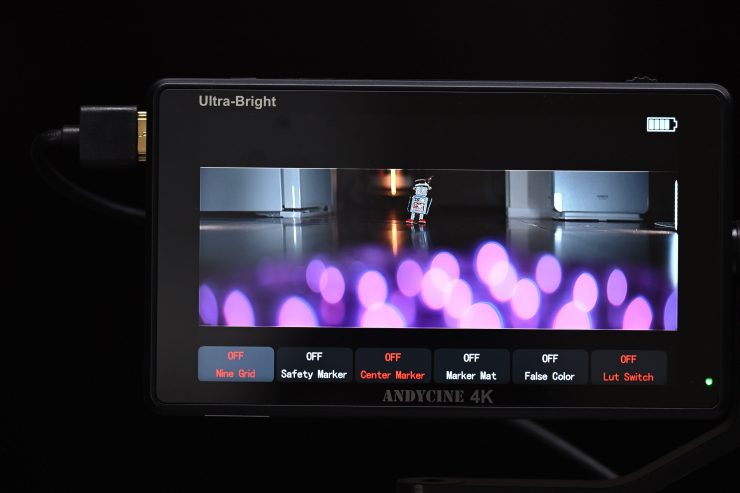
You can also assign quite a few presets by dragging your finger up from the bottom of the screen. Here you can set your most commonly used functions so you can access them quickly when need be. If you double-tap on any of the tabs you can change what they do.
To bring up the main menu you can double-tap on the screen. However, I did also find that like some Atomos monitors, I occasionally had to double-tap the screen more than once to try and bring up the menu. It wasn’t always as responsive as I would like.
Having used SmallHD’s fantastic Page OS system over the last few years it is very hard to go back to anything else. In saying that, AndyCine has a pretty good job with the operating system and it is better than most other monitors in this price range.
3D LUTs
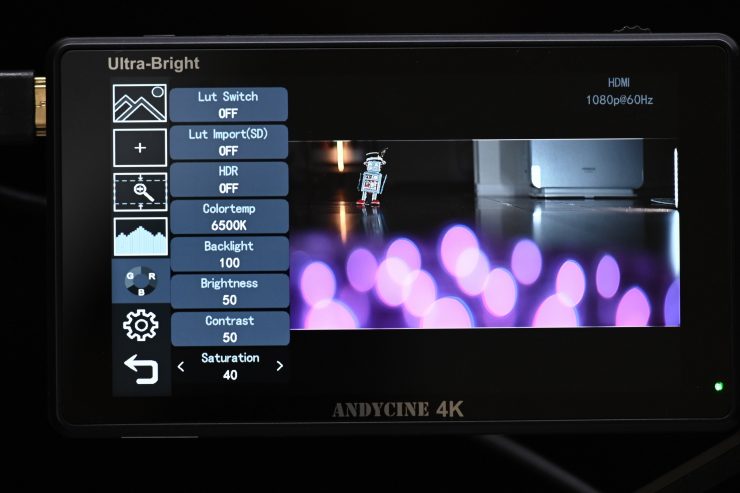
You can load up 3D LUT via the SD card slot. The monitor also has 4 pre-set onboard LUTs.
On the monitor I was testing these were the preset LUTs:
- SLOG2
- SLOG3
- LOGC
- VLOG
You can load up to 50 LUTS via the SD card slot.
Power
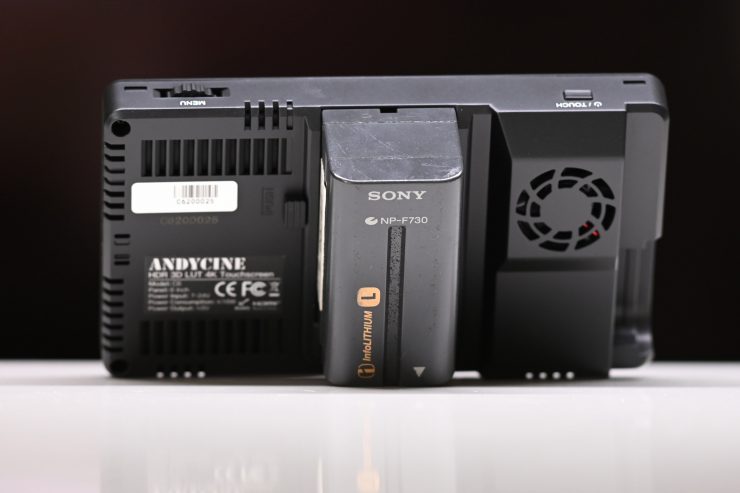
The monitor draws ≤ 10W and it can take an input voltage of 7-24V. It utilizes a single Sony NP battery plate.

The battery doesn’t move around or wobble on the battery plate.

There is a 12V DC In as well as an 8.4V DC out for powering certain accessories.
Is it quiet?

There is nothing worse than a monitor that has a very noisy fan. Some of the Atomos offerings sound like there is a mini hairdryer being used in the same room. The AndyCine is relatively quiet and it features a single fan. The fan is barely audible. I don’t think you will pick up any fan noise if you have this mounted on your camera.
The fan will automatically turn on if the backlight brightness is set to 80 and above.
How is the image?
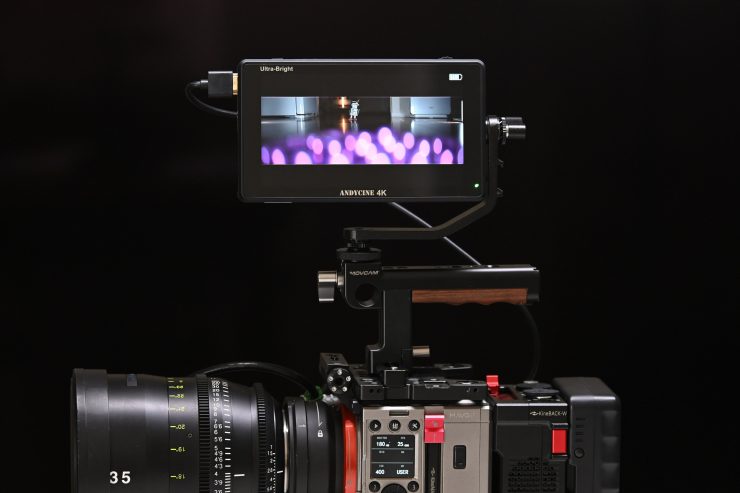
Image quality and usability are at least to me, the two biggest boxes that need to be ticked with any monitor that is going to be used in a professional environment.
As far as the image quality is concerned it is reasonably good. The screen is nice and bright and sharp, although the colors look slightly overly saturated. You can adjust the parameters of the image such as contrast, saturation, hue, and sharpness. I found that setting the saturation level to 40% produced the best results.
The images appear almost too sharp for my personal taste, however, I think most people would be happy with it. It is hard in a review to show you screen quality. You really need to see a screen yourself to be able to judge quality.
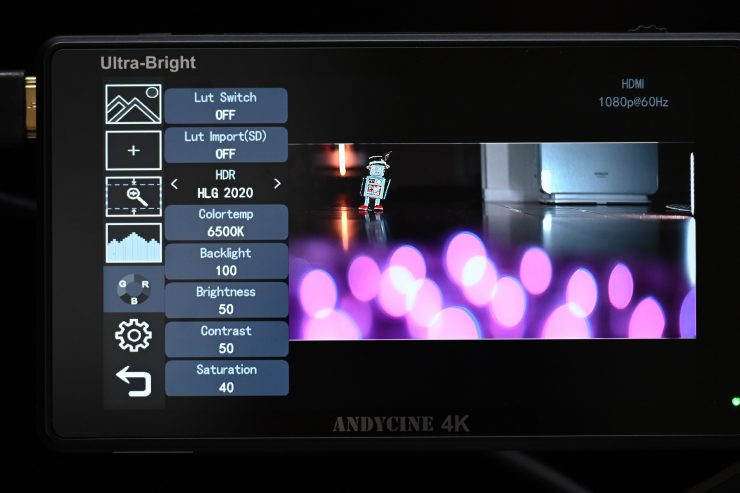
The screen only covers 100% of Rec.709, it doesn’t cover DCI-P3, nor will it cover Rec.2020, etc. Strangely the monitor does have HDR settings that include HLG P3, HLG.2020, and HLG.709. I’m not sure what good these modes would be given the monitor only covers a Rec.709 Color Gamut. They are really more like simulated views of what HDR would look like.
Is it actually 2600 nits?
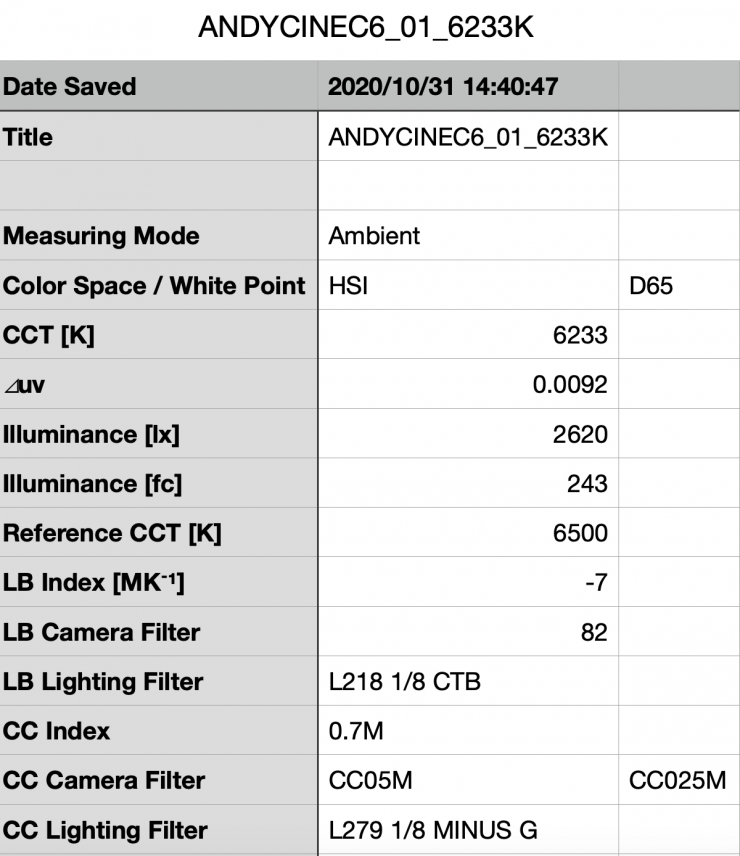
I tested the monitor by shooting a white card and exposing it at 100 IRE on a waveform. I then played back that clip and measured the brightness using a Sekonic C-800. The AndyCine C6 monitor had the backlight set to 100 and the brightness at 50%. It recorded a brightness level of 2620 lux, which exceeded the claimed figure of 2600.
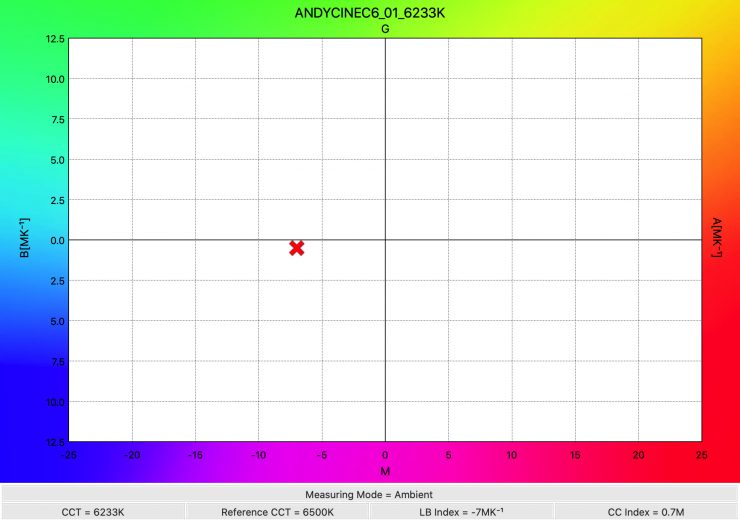
As far as color accuracy is concerned (the monitor’s Kelvin color temperature was set at 6500K), the AndyCine C6 recorded 6233K. This was a 267K off being a perfect 6500K reading.
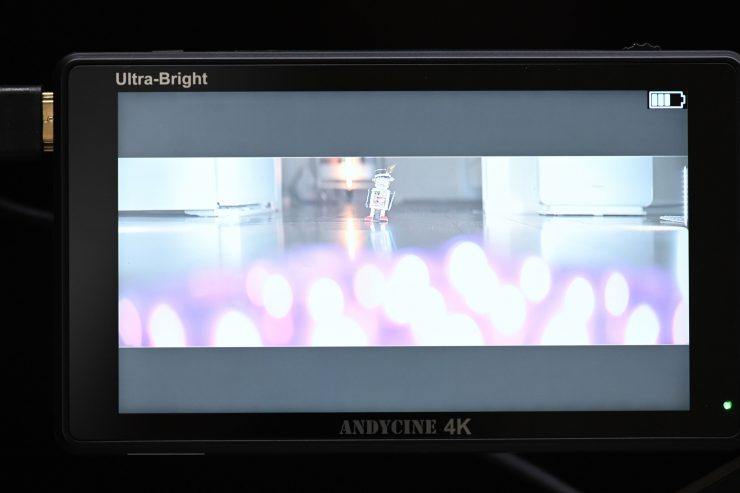
The brightness of the AndyCine C6 is impressive, but if you do turn the brightness up to 100% and you have the backlight set at 100, the image gets completely washed out and it isn’t usable.
Usability

Once you get the hang of how the touchscreen functionality works and the OS system it is quite easy to use.
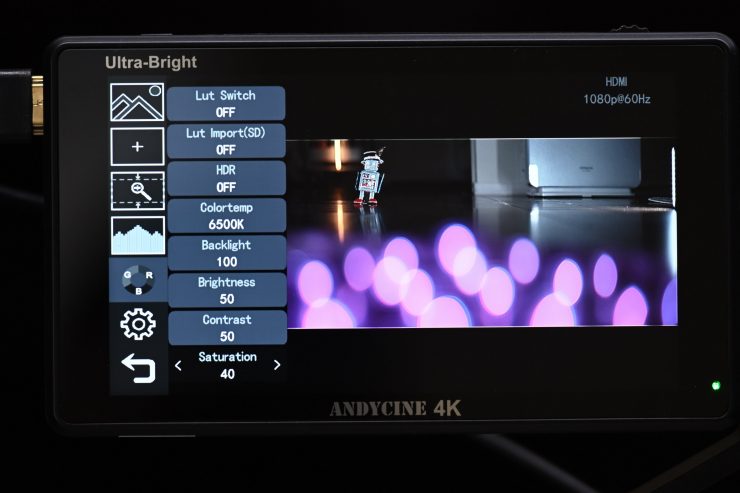
With monitors, you need to be able to access assist tools quickly. With the AndyCine C6 this is possible to do and I think most potential users will be happy with the way it works.
The monitor is easy to mount, but I do wish that the HDMI connectors were countersunk. With the ports on the side of the monitor, you need to be careful that your cable doesn’t get tangled on something.
Price & Availability
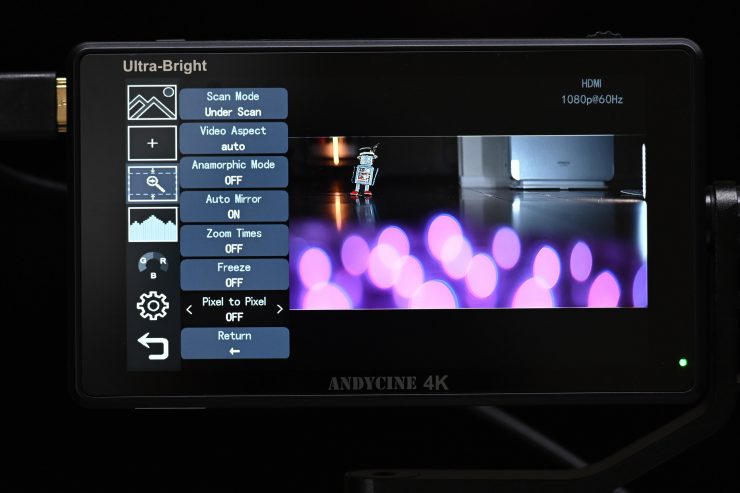
The C6 HDMI model is available for the retail price of $279.99 USD (around €279-289 in Europe)
The C6S SDI model is available for the retail price of $379.99 (around €379-389 in Europe)
Andycine official store:
https://www.andycine.com/andycine-c6-6%E2%80%9D-2600cdm-touchscreen-monitor-p2923899.html
Amazon store:
US:https://www.amazon.com/dp/B08JC58JVD?ref=myi_title_dp
UK:https://www.amazon.co.uk/dp/B08JCMTZTQ?ref=myi_title_dp
JP:http://www.amazon.co.jp/dp/B08JB582N3?ref=myi_title_dp
Competition
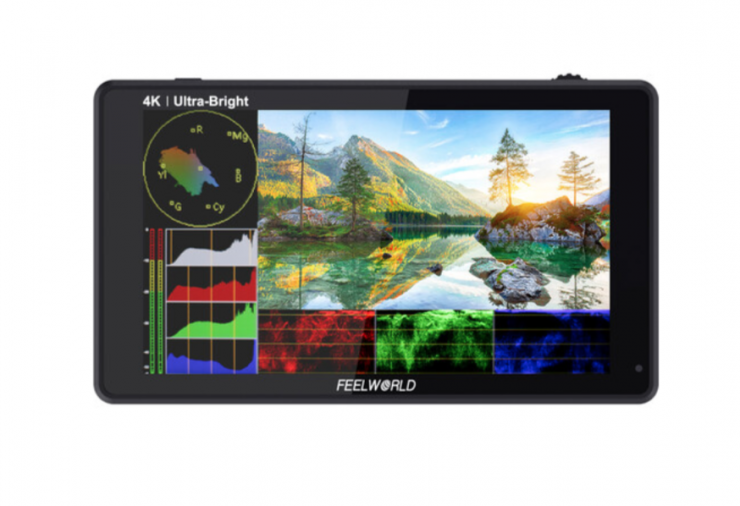
There are not actually that many other 6″ Ultra-Bright monitors that have touchscreen functionality (particularly in this price range). The only one I can think of is the FeelWorld LUT6 6″ 2600 cd/m² 4K HDMI Touchscreen Monitor $289 USD, which looks to be the exact same monitor, just rebranded.
Full Specifications
- High-resolution 1920 x 1200
- High-contrast of 1200:1
- Ultrabright 2600 cd/m²
- 160° wide-view-angle IPS Panel
- Histogram
- Peaking focus assist (red, green, or blue highlight over parts of the image in focus)
- False color
- Zebra exposure
- Nine-grid
- Embedded audio
- Scan mode (underscan, overscan)
- Zoom (4x, 9x, 16x)
- Anamorphic mode (1.3x, 2x, 2x mag)
- Pixel-to-pixel
- Center marker
- Safe area (80, 85, 90, 93, 96%, 2.35:1)
- Ratio marker (4:3, 13:9, 14:9, 15:9, 16:9, 1.85:1, 2.35:1)
- Marker color (red, green, blue, white, black)Check field (red, green, blue, mono)
- Image flip (H, V, H/V)
- Image freeze
- Color temperature adjustment
- Rear battery mount is compatible with Sony L-series/NP batteries: F-970, F-960, F-950, F-930, F-770, F-750, F-730, F-570, F-550, F-530, QM91D, QM91, QM90D, QM90, QM71D, QM71, QM70D, QM70, QM51D, QM51, F-M71, F-M70 series.
- Display Colors 16.7M (8 bit)
- Pixel Density 440 PPI
- Color Gamut 90% NTSC,
- Rec.709 Color Celibration
- Aspect Ratio 16:9
- Adjustable Backlight YES
- Viewing Angle 85°/85°(L/R) 85°/85°(U/D)
- Input/Out Signal HDMI v1.4
- SD Card Slot SD Card for 3D LUT uploading and Firmware upgrades Audio 3.5mm Stereo Headphone
- HDMI Input&Out Support Format 480i/576i/480p/576p 1080i (60/59.94/50) 720p (60/59.94/50/30/29/25/24/23.98) 1080p (60/59.94/50/30/29.97/25/24/24sF/23.98/23.98sF) 4K UHD 3840×2160p (30/29.97/25/24/23.98Hz), DCI 4K 4096×2160p (24Hz)
- Power Out DC 8V to power camera with a separately available DC coupler
- Power Consumption ≤ 10WInput Voltage DC7 ~24V
Conclusion
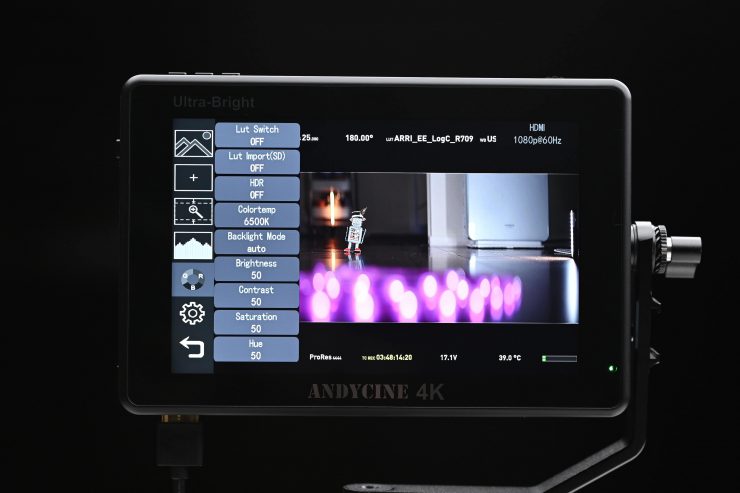
The AndyCine C6 is a pretty good monitor. It is bright, sharp, and the colors it displays are reasonably accurate (although maybe slightly oversaturated in the default mode). The operating system and touchscreen functionality could be better, but for a monitor in this price range, they are better than most of the competition.
The build quality is ordinary and the buttons and dials could be better made.
In saying that it is very hard to fault a monitor at this price and I don’t want to sound overly critical, because at $279.99 USD it offers pretty good value for money, especially if you are after a high-bright 6″ monitor that also has touch screen functionality. It is a little strange that this monitor is $10 USD more than the AndyCine C7 7″ Full HD HDMI Ultra-Bright Touchscreen Monitor.
At the end of the day, in a lot of cases, you end up paying for what you get. Nobody should be buying a sub $300 USD 6″ high-bright monitor and expect that it will be as well built or as good as say a SmallHD. There will always be compromises that have to be made if you don’t want to spend a lot of money.
AndyCine has done a pretty good job with the C6 and I think anyone who will be looking at a sub $300 USD monitor like this would be reasonably happy if they purchased it. The touchscreen functionality is what makes it stand out from other monitors in this category.
Like what we do and want to support Newsshooter? Consider becoming a Patreon supporter and help us to continue being the best source of news and reviews for professional tools for the independent filmmaker.

